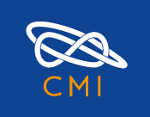

Home Registration Participants Programme Schedule Practical Information


| Lecture courses | ||
| Denis-Charles Cisinski | Cohomological methods in intersection theory | |
| Tomer Schlank | Homotopical manifestations of rational points and algebraic cycles | |
| Kirsten Wickelgren | Arithmetic enrichments of curve counts |
| Guest lectures | ||
| Paul Årne Østvær | \(\mathbb A^1\)-contractible varieties | |
| Jon Pridham | Iterative obstruction theory | |
| Vesna Stojanoska | A homotopical enhancement of Poitou-Tate duality | |
| Jesse Kass | How to arithmetically count lines on a singular cubic surface |
Cohomological methods in intersection theory.
Lecturer: Denis-Charles Cisinski (University of Regensburg)
Assistant: Christopher Lazda (University of Amsterdam)
Brief syllabus: Grothendieck and his school developed \(l\)-adic cohomology to prove the Weil conjectures. In particular, for each prime number \(l\), one can apply cohomological methods to \(l\)-adic cohomology in order to define invariants of schemes, such as Euler-Poincaré characteristics or \(\zeta\)-functions. This means that we interpret algebraic cycles in terms of \(l\)-adic cohomology classes. In these lectures, we shall explain how motivic sheaves, as introduced by Voevodsky, allow to understand these invariants in a more intrinsic way: in the motivic world, there is no difference between algebraic cycles and cohomology classes. We shall illustrate this by studying \(\zeta\)-functions associated to mixed motives and by studying motivic characteristic classes. A strong emphasis will be put on the dictionary between constructible functions and constructible motivic sheaves.
Homotopical manifestations of rational points and algebraic cycles.
Lecturer: Tomer Schlank (Hebrew University of Jerusalem)
Assistant: Ambrus Pál (Imperial College London)
Brief syllabus: The classical obstructions to rational points over number fields can be united and reinterpreted using étale homotopy theory. These kinds of obstructions can be applied to sections of maps of arbitrary toposes. Furthermore this more general framework can be used to understand closely related notions such as new obstructions to the existence of zero cycles, or to solutions to certain embedding problems in Galois theory. I will survey the general theory of this obstruction theory, how it can be applied in many different arithmetic problems, using either motivic or étale homotopy theory.
Arithmetic enrichments of curve counts.
Lecturer: Kirsten Wickelgren (Georgia Tech)
Assistant: Frank Neumann (University of Leicester)
Brief syllabus: We will introduce some basic notions of \(\mathbb A^1\)-homotopy theory, concentrating on extending some enumerative problems in algebraic geometry from the complex numbers to other fields. We will begin by introducing the Grothendieck-Witt group of quadratic forms over a field, and the Eisenbud-Khimshiashvili-Levine signature formula giving the local degree of a topological map over the reals. This will also introduce the notion of topological degree, and this will lead into a discussion of Morel's degree map in \(\mathbb A^1\)-homotopy theory, taking values in the Grothendieck-Witt group. We will discuss realization functors in \(\mathbb A^1\)-homotopy theory, and how the Eisenbud-Khimshiashvili-Levine signature formula is the realisation over the reals of the \(\mathbb A^1\)-degree. We will use this to give an arithmetic enrichment of the count of 1-nodal curves in appropriate families, following recent work of Marc Levine. We will discuss an Euler number valued in the Grothendieck-Witt group, and an extension of the count of the 27 lines on a cubic surface over the complex numbers to an arbitrary field from joint work with Jesse Kass.
How to arithmetically count lines on a singular cubic surface.
Lecturer: Jesse Kass (University of South Carolina)
Abstract: A celebrated 19th result of Salmon and Cayley is that a smooth cubic surface over the complex numbers contains exactly 27 lines. In a companion talk, Kirsten Wickelgren will explain how to extend this result extends to arithmetically interesting fields using ideas from \(\mathbb A^1\)-homotopy theory. In my talk, I will explain what happens when additionally the cubic surface becomes singular. As will be explained, the count of lines changes, and the counting problem has some new and complicated, but tractable, structure.
\(\mathbb A^1\)-contractible varieties.
Lecturer: Paul Årne Østvær (University of Oslo)
Abstract: Motivic homotopy theory gives a way of viewing algebraic varieties and topological spaces as objects in the same category, where homotopies are parametrised by the affine line. In particular, there is a notion of \(\mathbb A^1\)-contractible varieties. Affine spaces are \(\mathbb A^1\)-contractible by definition. The Koras-Russell threefold KR defined by the equation \(x+x^2y+z^2+t^3=0\) in \(\mathbb A^4\) is the first nontrivial example of an \(\mathbb A^1\)-contractible smooth affine variety. We will discuss this example in some detail, and speculate on whether one can use motivic homotopy theory to distinguish between KR and \(\mathbb A^3\).
Lecturer: Jon Pridham (University of Edinburgh)
Abstract: Obstruction theory crops up throughout algebra and topology, based on the idea that some homological algebra adapts to study abelian extensions of non-abelian objects. When applied to simplicial loop groups of etale homotopy types, this gives rise to several towers of obstructions for rational points on algebraic varieties. If we start from the set of adelic points, one such tower generalises Minhyong Kim's non-abelian reciprocity maps, while another has the Brauer-Manin obstruction at the first stage.
A homotopical enhancement of Poitou-Tate duality.
Lecturer: Vesna Stojanoska (University of Illinois at Urbana-Champaign)
Abstract: It is a classical result of Poitou and Tate that there is a duality in the Galois cohomology over a number field resembling Poincare duality for (open and non-orientable) manifolds. In this talk we will describe an enhancement of this duality where the Galois action is on homotopical rather than discrete objects. Examples come from etale homotopy theory as well as algebraic K-theory. If time permits, I will sketch some ideas for applying the enhanced duality theorem to the question of obstructing rational points. This is joint work with Tomer Schlank.
